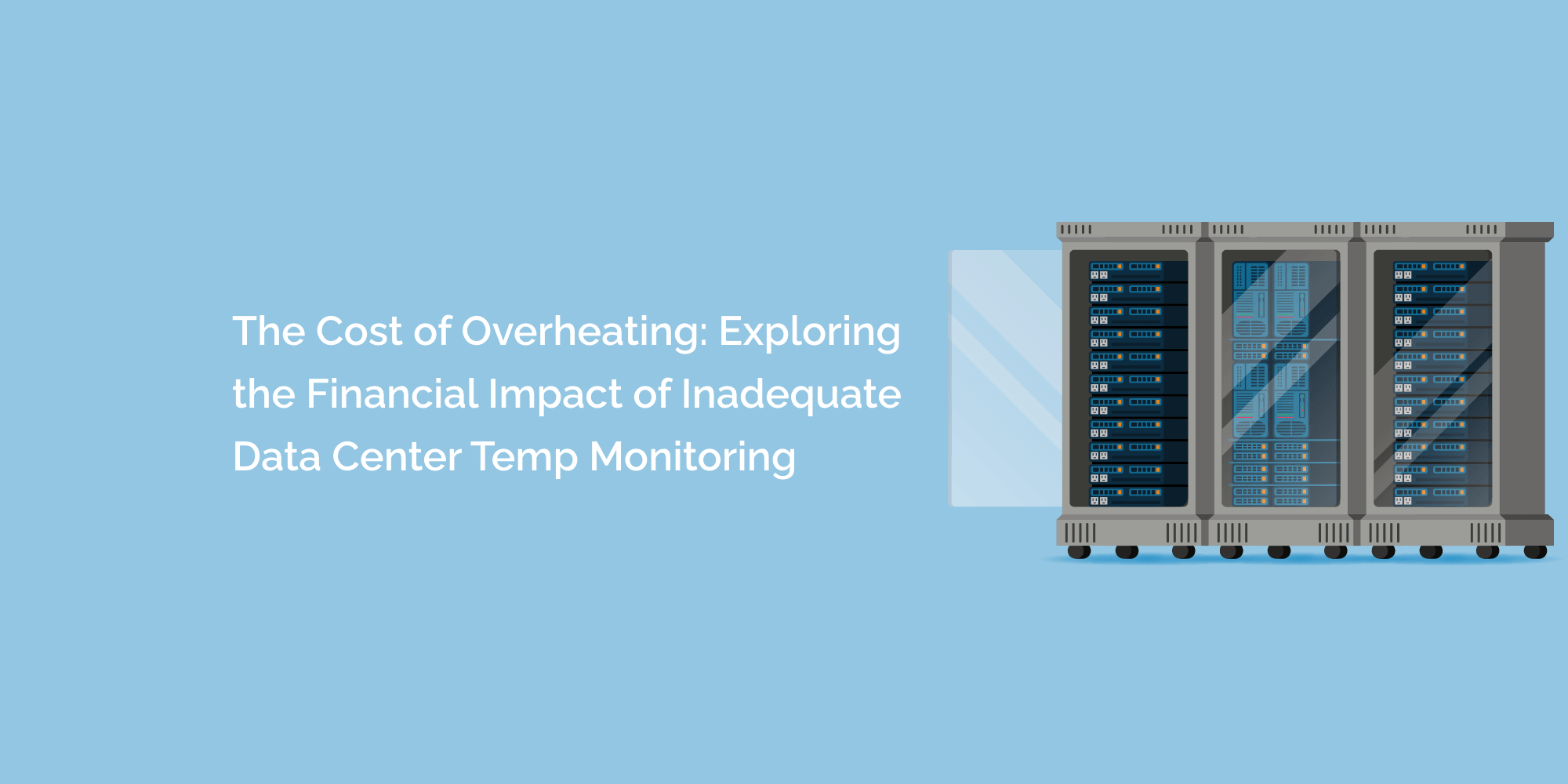Data centers serve as the backbone of the digital era, enabling seamless access to information and powering various online services. As the demand for data storage and processing continues to surge, data centers face the challenge of efficiently managing their operations, including temperature control. Inadequate data center temperature monitoring can have significant financial implications, leading to increased operational costs, unplanned downtime, hardware failures, and compromised data integrity. This blog will delve into the critical economic impact of inadequate data center temperature monitoring, the risks associated with overheating, and the benefits of proactive temperature monitoring in mitigating these risks.
The Consequences of Inadequate Temperature Monitoring
- Increased Energy Costs: Inadequate temperature monitoring can lead to inefficient cooling systems and excessive energy consumption. Overcooling or undercooling areas within the data center wastes energy, driving up operational expenses.
- Hardware Failures and Replacements: High temperatures can cause hardware components, such as servers and networking equipment, to overheat. This thermal stress increases the likelihood of hardware failures, necessitating frequent replacements and incurring additional capital expenses.
- Unplanned Downtime: Overheating poses a severe risk of system failures and crashes. Unplanned downtime can disrupt critical operations, damage the reputation of data center services, and result in lost revenue and customer trust.
- Data Loss and Recovery Costs: Overheating can lead to data corruption and loss, leading to additional data recovery and restoration expenses.
- Reduced Equipment Lifespan: Consistent exposure to high temperatures can shorten the operational lifespan of data center equipment, leading to more frequent replacements and higher capital expenditures.
- Compliance and Legal Risks: Data centers that fail to meet temperature requirements may face compliance issues and potential legal liabilities. Compliance violations can result in financial penalties and reputational damage.
The Financial Impact of Overheating
- Downtime Costs: According to a report by the Ponemon Institute, the average cost of data center downtime was approximately $740,357 in 2020. Overheating-related failures are a leading cause of unplanned downtime, driving up these costs significantly.
- Hardware Replacement Costs: Frequent hardware failures due to overheating necessitate frequent replacements, resulting in increased capital expenses for data center operators.
- Energy Overconsumption: Inefficient cooling systems due to inadequate temperature monitoring contribute to energy overconsumption, increasing operational costs.
- Data Recovery Expenses: In the event of data loss or corruption caused by overheating, data centers may incur significant expenses for data recovery services.
- Reputation Damage: Data center outages and service disruptions due to overheating can lead to reputational damage, resulting in the loss of customers and potential revenue.
- Cooling System Upgrades: To rectify inadequate cooling systems, data centers may need to invest in expensive cooling system upgrades, further adding to operational costs.
The Benefits of Proactive Temperature Monitoring
Proactive temperature monitoring is crucial for data centers to mitigate the financial risks of inadequate temperature control. Here are some key benefits:
- Early Issue Detection: Proactive temperature monitoring lets data center operators detect temperature-related issues early. By identifying potential problems before they escalate, operators can take preventive measures to avoid costly hardware failures and downtime.
- Optimized Cooling Efficiency: Continuous temperature monitoring provides real-time insights into cooling system performance. Data center operators can optimize cooling resources, fine-tune cooling parameters, and reduce energy waste, resulting in cost savings.
- Prevent Hot Spots: Proactive temperature monitoring helps identify hot spots within the data center. Operators can implement cooling strategies like hot aisle/cold aisle containment to prevent overheating and ensure even cooling distribution.
- Predictive Maintenance: By analyzing historical temperature data using predictive analytics, data center operators can anticipate potential cooling challenges and schedule preventive maintenance. This approach minimizes the risk of unexpected equipment failures and reduces downtime costs.
- Enhanced Capacity Planning: Accurate temperature data aids capacity planning, enabling data center operators to anticipate future cooling requirements and align them with energy management strategies. This helps optimize resource utilization and reduce unnecessary expenses.
- Compliance and Risk Mitigation: Proactive temperature monitoring ensures data centers comply with industry standards and regulations, reducing the risk of non-compliance-related financial penalties and reputational damage.
Of course! Here are some frequently asked questions (FAQs) related to data center temperature monitoring and its financial impact:
What are the financial risks of inadequate data center temperature monitoring?
Inadequate temperature monitoring can lead to increased energy costs, hardware failures, unplanned downtime, data loss, and compliance-related financial penalties.
How does overheating impact data center finances?
Overheating can result in expensive downtime costs, hardware replacements, data recovery expenses, and increased energy consumption, all of which have a significant financial impact on data centers.
Conclusion
Inadequate data center temperature monitoring can lead to significant financial consequences, impacting energy costs, hardware failures, unplanned downtime, and data loss. The financial risks associated with overheating emphasize the critical importance of proactive temperature monitoring in data centers.
By adopting proactive temperature monitoring practices, data center operators can detect and address cooling-related issues early, optimize cooling efficiency, prevent hot spots, and enhance overall efficiency. Proactive temperature monitoring mitigates financial risks and ensures data centers operate optimally, supporting seamless access to digital services and empowering businesses in the modern digital era. As the data-driven landscape continues to evolve, proactive temperature monitoring remains a cornerstone of effective data center management, contributing to cost savings, reliability, and the sustainable growth of the digital infrastructure.








